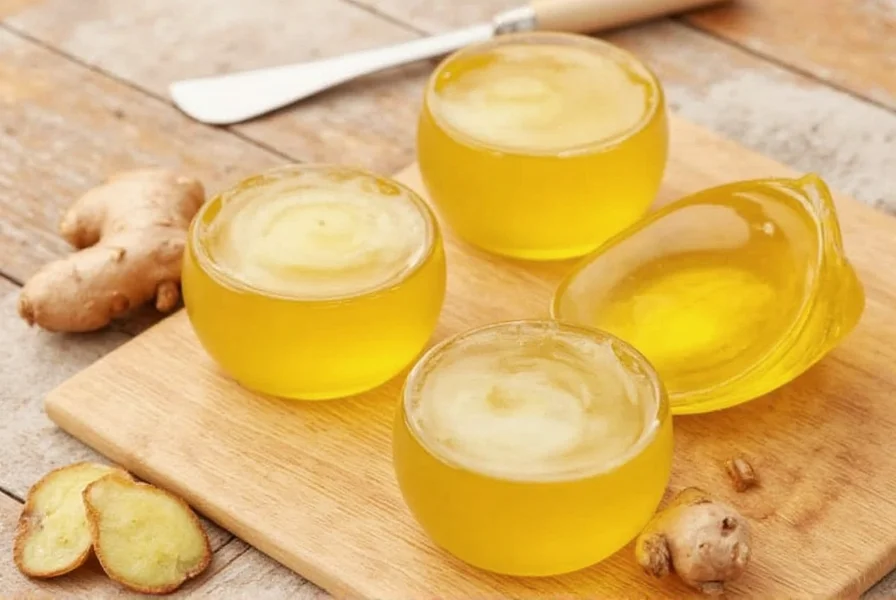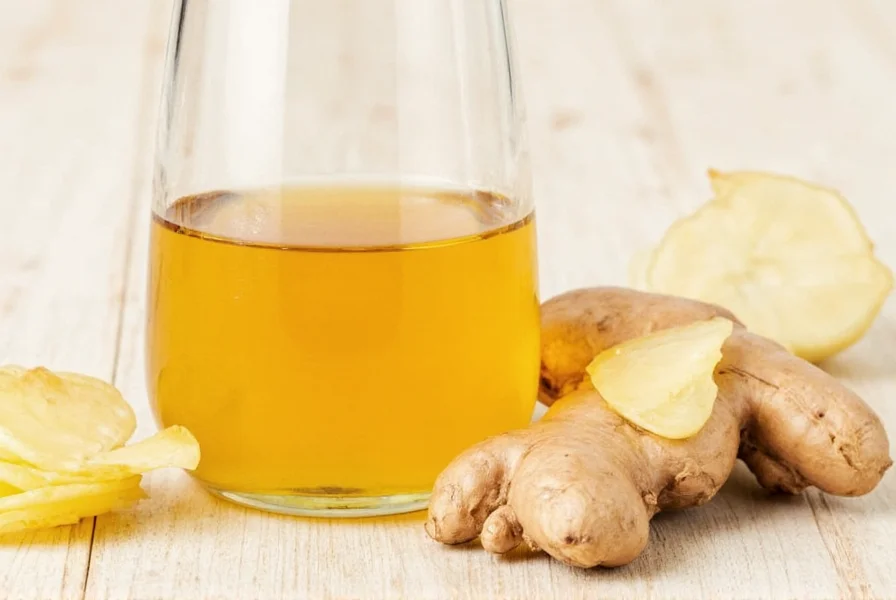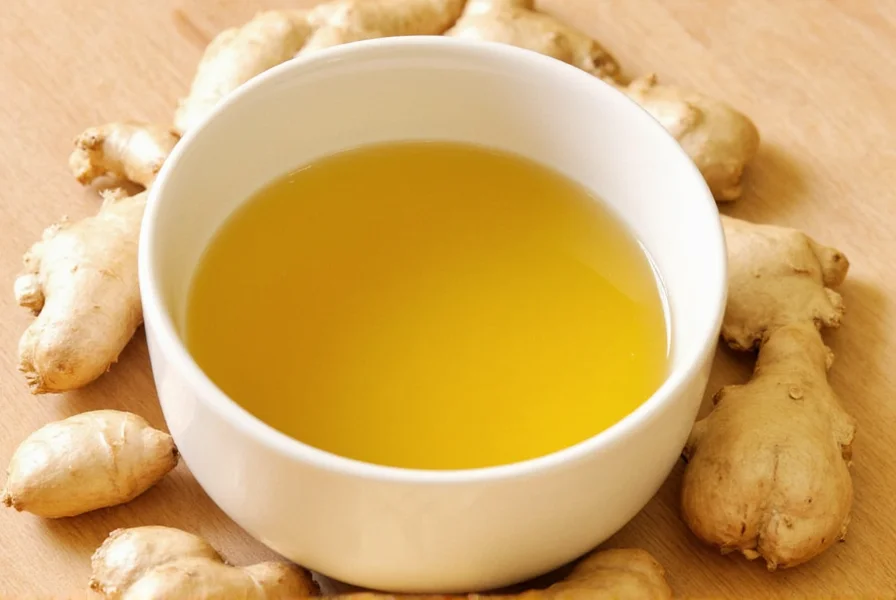Ginger in syrup represents one of the most versatile ginger preparations, combining the therapeutic properties of fresh ginger with the preservation benefits of sugar syrup. This traditional preparation method has been used for centuries across Asian, Middle Eastern, and Caribbean cultures for both culinary and medicinal purposes. Unlike crystallized ginger (which is dried after syrup cooking), ginger in syrup maintains a moist texture and can be used in both solid and liquid applications.
What Exactly Is Ginger in Syrup?
Ginger in syrup consists of ginger rhizomes preserved in a simple sugar solution, typically with a ratio of 1:1 sugar to water by volume. The ginger pieces remain submerged in the liquid syrup, creating what's sometimes called "ginger preserves" or "ginger cordial." This differs from ginger extract (alcohol-based) and ginger powder (dehydrated and ground).
The preparation process involves simmering peeled and sliced ginger in the sugar solution for 30-60 minutes until the ginger becomes translucent and tender. Some recipes include additional ingredients like lemon zest, cinnamon, or cloves to complement the ginger's flavor profile. The resulting product contains both the preserved ginger pieces and the ginger-infused syrup.
Historical and Cultural Significance
Ginger preservation in syrup dates back to ancient Chinese and Indian medicinal practices, where it was valued for its digestive and anti-nausea properties. Traditional Chinese Medicine has used ginger syrup preparations for over 2,000 years to treat colds, nausea, and digestive discomfort. In Caribbean cultures, ginger syrup forms the base for traditional beverages like "ginger beer" and "sorrel drink." Middle Eastern cultures incorporate ginger syrup into desserts and medicinal tonics.
How to Make Ginger in Syrup at Home
Creating homemade ginger syrup requires minimal equipment and ingredients. The basic process involves:
- Peeling and thinly slicing fresh ginger root
- Combining equal parts sugar and water in a saucepan
- Adding ginger slices to the mixture
- Gently simmering for 30-60 minutes until ginger becomes tender
- Cooling and transferring to sterilized glass containers
For optimal shelf life, process the filled jars in a water bath canner for 10 minutes. Properly canned ginger syrup can last 12-18 months unopened. Refrigerated after opening, it maintains quality for 3-6 months.

Practical Applications and Uses
Ginger in syrup serves multiple purposes across culinary and wellness contexts. The dual components (ginger pieces and syrup) offer distinct applications:
| Component | Culinary Uses | Medicinal/Wellness Uses |
|---|---|---|
| Ginger pieces | Dessert garnish, baking ingredient, tea addition | Digestive aid, nausea relief, sore throat remedy |
| Ginger syrup | Cocktail mixer, beverage sweetener, glaze ingredient | Cough syrup base, immune support tonic, digestive aid |
Health Benefits Supported by Research
Ginger contains bioactive compounds like gingerols and shogaols that provide therapeutic effects. When preserved in syrup, these compounds remain stable and bioavailable. Research indicates several evidence-based benefits:
- Nausea relief: Multiple studies show ginger's effectiveness against morning sickness, motion sickness, and chemotherapy-induced nausea
- Digestive support: Ginger stimulates digestive enzymes and gastric motility
- Anti-inflammatory properties: Gingerols demonstrate significant anti-inflammatory effects in clinical studies
- Immune support: Traditional use for cold and flu symptoms has some scientific backing
While the sugar content in syrup preparations should be considered, the therapeutic dose of ginger typically requires only small amounts (1-2 teaspoons of syrup or 1-2 pieces of preserved ginger).
Ginger in Syrup vs. Other Ginger Preparations
Understanding the differences between ginger preparations helps determine the best option for specific needs:
- Fresh ginger: Highest in gingerols but perishable; requires preparation before use
- Ginger powder: Concentrated but loses volatile compounds; convenient for baking
- Ginger extract: Alcohol-based; high concentration but strong flavor
- Ginger in syrup: Balanced sweetness with therapeutic compounds; versatile for both culinary and medicinal use
- Candied ginger: Dried version of ginger in syrup; chewy texture, portable

Storage Guidelines and Shelf Life
Proper storage maintains both safety and quality of ginger in syrup:
- Unopened, canned: Store in cool, dark place for 12-18 months
- Refrigerated after opening: Consume within 3-6 months
- Signs of spoilage: Mold growth, fermented smell, or significant color change
- Freezing option: Portion syrup into ice cube trays for longer storage (up to 1 year)
Always use clean utensils when removing ginger or syrup from the container to prevent contamination. The high sugar content acts as a natural preservative, but proper handling remains essential.
Culinary Applications and Recipe Ideas
Ginger syrup's versatility makes it valuable in multiple culinary contexts. Here are practical applications for both the syrup and preserved ginger pieces:
- Beverages: Add 1-2 tablespoons to hot water for ginger tea, or use as a cocktail mixer in Moscow Mules, ginger margaritas, or non-alcoholic sparkling drinks
- Baking: Incorporate chopped ginger pieces into cookies, cakes, or breads for bursts of flavor
- Glazes and sauces: Use the syrup as a base for meat glazes or salad dressings
- Desserts: Serve preserved ginger over ice cream or incorporate into fruit salads
- Medicinal tonics: Mix with lemon juice and honey for a soothing throat remedy
Considerations for Specific Dietary Needs
While ginger in syrup offers numerous benefits, certain considerations apply for specific dietary requirements:
- Sugar content: Contains significant sugar; those monitoring sugar intake should use sparingly
- Alternative sweeteners: Some recipes use honey or maple syrup instead of sugar, though this affects preservation
- Alcohol substitution: Ginger syrup can replace simple syrup in cocktails for added flavor complexity
- Gluten-free status: Naturally gluten-free when prepared with pure ingredients
For those seeking lower sugar options, consider using ginger syrup as a partial sweetener replacement rather than complete substitution in recipes.
Frequently Asked Questions
How long does homemade ginger in syrup last?
Properly canned and unopened ginger syrup lasts 12-18 months in a cool, dark place. Once opened, refrigerate and consume within 3-6 months. Always check for mold, off smells, or significant color changes before using.
Can ginger in syrup help with nausea?
Yes, research supports ginger's effectiveness for nausea relief. Consuming 1-2 teaspoons of ginger syrup or 1-2 pieces of preserved ginger can help alleviate motion sickness, morning sickness, and postoperative nausea. The syrup format makes the ginger more palatable while delivering the active compounds.
What's the difference between ginger in syrup and crystallized ginger?
Ginger in syrup remains submerged in liquid sugar solution, while crystallized ginger is the same product that's been removed from the syrup and rolled in additional sugar, then dried. Ginger in syrup has higher moisture content and can be used for both the ginger pieces and the flavored syrup, whereas crystallized ginger is primarily eaten as a candy or baking ingredient.
How can I use ginger syrup in cocktails?
Ginger syrup makes an excellent cocktail mixer, typically used at a 0.5-0.75 ounce measure per drink. It works particularly well in Moscow Mules, ginger margaritas, or as a substitute for simple syrup in whiskey-based cocktails. The syrup adds both sweetness and distinctive ginger flavor without the texture of fresh ginger.
Does ginger in syrup retain the health benefits of fresh ginger?
Yes, the preservation process maintains ginger's key bioactive compounds like gingerols, though some heat-sensitive compounds may decrease slightly during cooking. The syrup format actually enhances bioavailability of certain compounds while making the ginger more palatable for regular consumption, potentially increasing consistent usage for therapeutic benefits.











 浙公网安备
33010002000092号
浙公网安备
33010002000092号 浙B2-20120091-4
浙B2-20120091-4